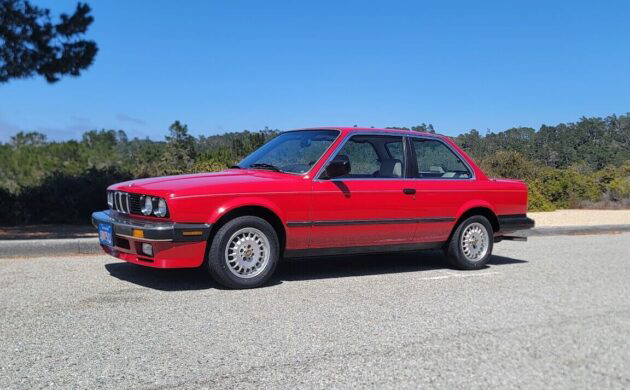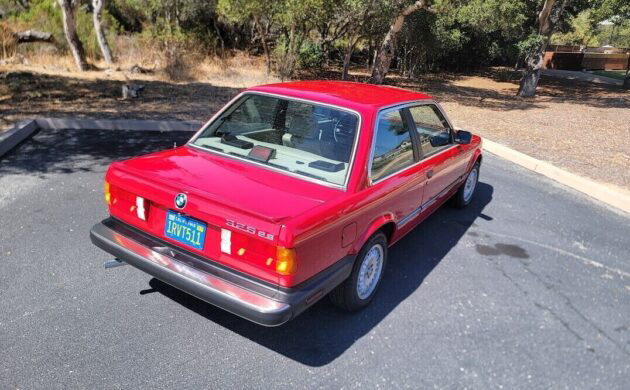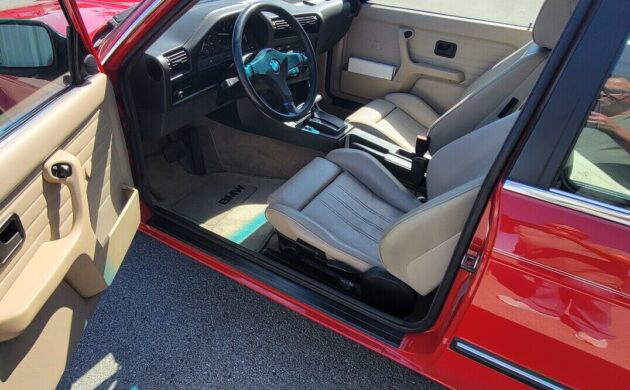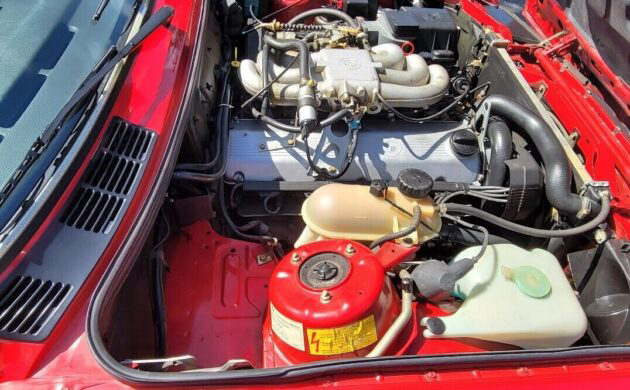As someone who still owns the E30-chassis 3-Series he bought as a project 12 years ago, I have enjoyed seeing the prices rise on what many consider to be the high watermark for the model. The E30 was made from the middle 80s to the early 90s and it remains one of the best project cars you can buy. While prices have gone up, you can find a decent platform for a build or restoration for still-reasonable money, which is hard to find in today’s nutty collector car market. This one will cost you a few bucks as it features very low mileage and remains in outstanding condition, albeit with the penalty of an automatic transmission. Find this 1986 325ES here on eBay with bids to $10,150 and the reserve unmet.
The 325ES was offered the year before my car came along, which was a 1987 325IS. Yes, the letters make a difference, as the ES models were equipped with the fuel-efficient ETA engine that had more displacement than the later “I” engine, but also made dramatically less power. My car puts out about 167 b.h.p., while the ES made do with around 121. The “S” designation that both models shared had to do with the car being marked as a “Sport” trim, which featured a front air dam with fog lights and a rear spoiler; a limited-slip; three-spoke steering wheel; sport seats with Recaro-style bolstering; and a firmer suspension. This 325ES is bone-stock and retains all of those features.
The seats command a fair price these days, especially when found in mint condition as this car has. The seller notes this is a one-owner example with just 26,426 original miles, and looking at the photos, there is little reason to doubt that claim. The interior color is the same as mine, known as Pearl Beige, and while a black interior would likely drive more interest, it honestly won’t make a huge difference in a car that’s as well-preserved as this one is. The seller claims this is a southern California E30 since new, which means rust is likely non-existent. It comes with all manner of original parts that are often lost or damaged, from the cassette deck cleaner kit to the jack to the tools.
The strut housings still wear the original warning stickers adhered at the factory, and other details, like the spotless valve cover and intake manifold along with the clear plastic of the washer tank all suggest a car that has seen very little use over the years. The smart play with this car is to buy it for the best price you can get it for, convert the transmission to a manual, and relist it in hopes of securing an even better price down the line. Of course, you could also just leave it alone, content in knowing you own one of the most well-preserved E30s on the planet. I know I’d opt for the transmission swap, but that’s only because I know how good these cars are with three pedals. No matter which option you choose, you’ll have one of the best ones left.






Clean low mileage e30 is going to bring some serious bidding. Personally the eta engine and slush box is a killer for me. Not that the eta was a bad engine it was super efficient and will run for over 500K due to a low stressed design but it runs counter to what a good BMW should be. 4500RPM redline no thanks. Not only did this engine use lightweight valve springs to cut friction they even removed a cam bearing journal. I would imagine if this falls into an enthusiasts hands it will probably be powertrain swapped.
Ya, the IS was the engine only sold overseas and in Sudafrica.
The 4 valve.
I had a 1985 with the ETA engine. It is pretty slow (121 HP) and has a 4,500 RPM red line, so it runs out of steam fast. Mine was a manual. I imagine with the automatic it would be really slow.
The one to get is the 1987 and up 325is with the much better 2.5 liter 168 HP motor.
I have become quite interested in Beamers this last 10 yrs but know very little about them, thanks for explaining all this stir about the E30. If this car was a couple of years newer with a manual trans what would you expect to pay?